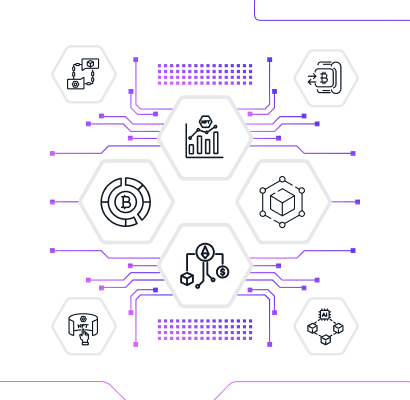

Scaling a Web Application: Strategies and Best Practices

Are you running a web application that is experiencing significant growth? As your user base and traffic increase, it’s crucial to ensure that your application can handle the load without compromising performance. In this article, we’ll give you an introduction to web application scaling. We’ll cover the basics of why you need to scale your web application as well as some common scaling strategies. By the end of this article, you should have a good understanding of how to scale your web application effectively.
Scaling a web application involves implementing various strategies to optimize its performance and handle increased user demand. With the right planning and execution, you can successfully scale your web application to meet the demands of your growing user base.
Analyzing Your Platform for Performance Optimization
As your web application grows, it’s important to regularly analyze your platform for performance optimization. There are a number of tools and techniques you can use to do this, including:
- Using a profiler to identify bottlenecks in your code
- Reviewing your application and database logs for errors or slowdowns
- Running load tests to simulate real-world traffic conditions
By regularly analyzing your platform, you can identify potential problems early on and avoid them before they cause major issues. You can also take steps to improve the overall performance of your application. This includes things like optimizing your code, caching content, setting up a CDN (Content Delivery Network), and using compression techniques.
Finally, you should consider implementing monitoring tools to track the performance of your application over time. This will allow you to identify trends and catch potential problems before they become major issues.
Vertical and Horizontal Scaling Strategies
When you’re first starting out, it’s natural to want to keep things small and manageable. But as your web application grows in popularity, you’ll need to start thinking about how to scale it up to meet the demand. There are two main ways to do this: vertical scaling and horizontal scaling.
Vertical scaling is the process of making your existing server infrastructure more powerful. This could involve upgrading your servers, adding more RAM or CPU, or using a more powerful database. It’s a straightforward way to scale up, but it can be expensive if you need to keep upgrading your hardware regularly.
Horizontal scaling is the process of adding more servers to your infrastructure. This allows you to distribute the load across multiple servers, which can make your application more resilient and scalable. It’s usually a cheaper option than vertical scaling, but it can be more complex to set up and manage.
The best way to scale your web application will depend on your specific needs and budget. But whichever approach you take, there are some general tips that will help you get the most out of your scaled-up infrastructure.
Understanding Load Balancing and Caching Techniques
Load Balancing
Load balancing is a technique used to distribute incoming traffic evenly across a group of servers. This ensures that no single server is overloaded and prevents your application from going offline if one server fails. When done correctly, load balancing can help ensure that your application can handle sudden spikes in traffic without issue.
There are a number of different algorithms that can be used for load balancing, and choosing the right one will depend on the specific needs of your application. Some common load-balancing algorithms include round-robin, least-connections, and least-time.
In addition to helping balance traffic, load balancers can also be used to provide additional security for your applications. By routing requests through a single point of access, it can help keep malicious requests from reaching your servers directly.
Caching
Caching is another important technique for scaling web applications. Caching involves storing frequently accessed data in a cache memory, enabling faster retrieval and reducing the load on the application’s backend. We can add caching to different level of our application. Some of the common caching types are as follows:
1. Client-Side Caching
Client-side caching is achieved by instructing browsers to cache static content such as images, CSS files, and JavaScript files. By setting proper cache headers, you can significantly reduce the number of requests made to your server, thus improving performance.
Content Delivery Networks (CDNs) can also be employed to cache static assets, such as images, videos, and CSS files, in geographically distributed locations. By serving these assets from the nearest CDN edge server, you can reduce latency and offload the traffic from your application servers.
2. Server-Side Caching
Server-side caching involves caching dynamically generated content at the server level. By implementing a caching mechanism, such as Redis or Memcached, you can store frequently accessed data and retrieve it quickly, without hitting the database every time. This greatly improves response times and reduces server load.
Database Optimization
There are a few things you can do to optimize your database:
- Use indexing wisely – Indexes can help speed up queries, but they can also slow down inserts and updates. You need to carefully consider which columns to index and which ones to leave out.
- Normalize your data – This means organizing your data into tables and relations in such a way that redundancy is minimized. Normalization can help reduce the size of your database and improve performance.
- Use caching – As discussed above, caching can help reduce the number of reads from the database by storing frequently accessed data in memory. This can greatly improve performance, especially if your database is on a slow disk or network connection.
- Optimize your queries – This means making sure that you are using the most efficient SQL statements possible for the job. You may want to review your queries and look for opportunities to make them more efficient.
Database optimization is one of the most important aspects of scaling a web application. If your database is not optimized, your application will not be able to handle the increased load and will eventually fail.
Best Practices for Scaling Web Applications
There are many factors to consider and it is often difficult to know where to start. However, by following some simple best practices, you can ensure that your web application scales effectively and efficiently.
One of the most important things to remember when scaling a web application is to avoid single points of failure. This means ensuring that there is no single component of your system that, if it fails, will bring down the entire system. For example, you might want to consider using multiple servers or database replication.
Another important best practice is to keep your system as stateless as possible. This means avoiding storing data in session state or in the application itself. Instead, store data in a database or other external storage system. This will make it much easier to scale your application vertically (by adding more servers) or horizontally (by adding more database instances).
Remember to monitor your system carefully as you scale it. This will help you identify any bottlenecks or areas of improvement. By following these best practices, you can ensure that your web application scales effectively and efficiently.
Conclusion
Scaling a web application involves implementing various techniques such as caching at different levels, load balancing, and adopting the correct architecture. By employing these strategies, you can ensure that your application remains performant, highly available, and capable of handling increased user demand. Remember, scalability should be considered from the early stages of development to lay a solid foundation for your application’s growth. We hope that this article has given you some guidance on how to go about scaling your own web application and that you now feel more confident tackling this endeavor.
Interested in Learning More About x-enabler Book a One-to-One Personalized Call



Leave a comment!